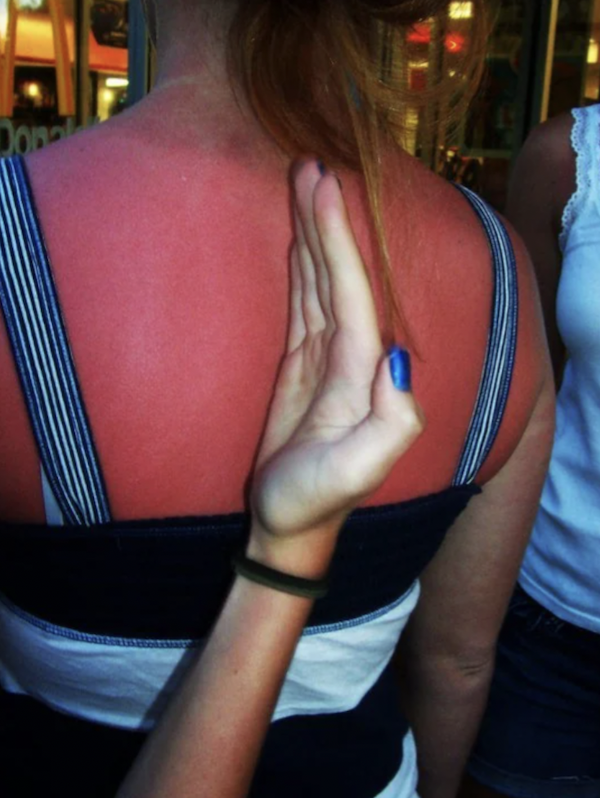The newest registered user is гераскинс
Our users have posted a total of 48009 messages in 7050 subjects

WORLD CLOCK
INFO VINE * 50 Historical Photos of Chicago *
Valley of the Sun Casual Club :: WORDS , FACTS , DATES , GAMES & TRIVIA & HISTORY :: INFORMATION VINE
 INFO VINE * 50 Historical Photos of Chicago *
INFO VINE * 50 Historical Photos of Chicago *

Photo Courtesy: [Three Lions/Getty Images]
Aerial View of Chicago, circa 1955
01.) 50 Historic Photos of Chicago That Will Surprise You
02.) These Are the Most Amazing Photos from Chicago's History
03.) 50 of the Most Amazing Photos in Chicago's History
04.) 50 Photos of Chicago That Will Amaze You
05.) 50 Surprising Photos from Chicago's Past
06.) 50 Photos of Chicago's Rich History
07.) 50 Photos of Chicago You Need to See
08.) These 50 Historic Photos of Chicago Will Stun You
09.) Can You Identify These 50 Historic Photos of Chicago?
10.) How Well Do You Know These 50 Historic Photos of Chicago?
Chicago, Illinois is a city brimming with a rich history. These 50 photos will take you back in time to scenes depicting classic Chicago at its finest. Explore the famous World's Columbian Exposition, the Big Band era of jazz, American baseball, historic buildings, and more like never before. How many photos can you recognize?
The iconic Wrigley Building, shown here front and center, was a forerunner among large-scale office buildings in the area. It stands on the Magnificent Mile along the Chicago River. The south tower of the Wrigley Building is host to the clock tower, with faces that point in all directions.
The famous DuSable Bridge, once known as the Michigan Avenue Bridge, connects the Near North Side with the Loop. William Wrigley Jr. commissioned both the Wrigley Building and the sculptures created on the northern bridge-houses. He said, "A man’s doubts and fears are his worst enemies. He can go ahead and do anything as long as he believed in himself."
Chicago's Union Station Great Hall
The Great Hall sits at the center of Union Station, with connecting lobbies, grand staircases, and balconies. The hall's breadth and beauty have attracted film crews for television and movies over the years. Ongoing renovations since it first opened in 1925 have ensured that its splendor remains.

Photo Courtesy: [Fyu/Wikimedia Commons]
Chicago Union Station is an important hub for travel. It is Amtrak's overall fourth-busiest station. Also, multiple other transit authorities enjoy a direct connection to the station. It is located in the West Loop Gate neighborhood of the Near West Side of Chicago.
Off to the Market, 1917
Merchants and shoppers flocked to the Sunday market on Maxwell Street in Chicago, Illinois. People could find a kaleidoscope of items for sale, both new and used alike. As such, the Sunday market became the inspiration for Chicago's subsequent flea market shopping.

Photo Courtesy: [Chicago Sun-Times/Chicago Daily News collection/Chicago History Museum/Getty Images]
Pictured here, potential buyers inspect goods for sale among the tables and stands set up by hopeful merchants. Horse-drawn carriages pass by the scene while others choose to walk up and down Market Street. A hanging sign advertises second-hand clothing for sale as well as additional garment services.
Chicago's Great Railway Hub, 1943
C&O combined the Chicago, Cincinnati, and Louisville Railroads in 1910. 33 years later, these train cars line the tracks near the Chesapeake and Ohio Railroad engine house in Chicago, Illinois. More train tracks expand out from Chicago in multiple directions than from any other city in the United States.

Photo Courtesy: [Jack Delano/Getty Images]
The Mather Tower, the Wrigley Building, and the Tribune Tower can all be seen in the distance from this view alongside the South Water Street Freight Terminal. The Mather Tower was designed to be the headquarters for the Mather Stock Car Company. Adding to the robust railway system, the company manufactured rail cars for transporting livestock.
Bison Statues from the World's Columbian Exposition
Sculptor Edward Kemeys created this pair of bison statues for the 1893 World's Columbian Exposition. The duo, named "Prairie King" and "Sound of the Whoop," were later re-cast in bronze. By 1915, the World's Fair Bison were moved permanently to the entrance of Humboldt Park's formal garden.

Photo Courtesy: [Paul R. Burley/Wikimedia Commons]
Kemeys was also well-known for his bronze sculptures of the lion statues that stand outside the Art Institute of Chicago Building. He was called the "first animalier in America" for his realistic depictions of animals' behavior in the wild. The artist was also known as a writer, an adventurer, and a lecturer.
Commemorating 400 Years of History, 1893
The "Grand Basin" was the centerpiece for 14 pre-eminent buildings on display at the World's Columbian Exposition. This enormous body of water represented the vast ocean Christopher Columbus sailed across in 1492. His arrival in the New World was memorialized during this spectacular World's Fair held by Chicago in 1893.

Photo Courtesy: [Chicago History Museum/Getty Images]
Pictured above, two people take in the sights that surround the Grand Basin. The crowning jewel, created by Frederick William MacMonnies, is the Columbian Fountain in the center. The 14 "Great Buildings," spread out around the water's edge, represent industries ranging from agriculture to transportation.
Studio Portrait of King Oliver and His Creole Jazz Band, 1923
Pictured below, Joseph Nathan "King" Oliver poses with band members Honore Dutrey (trombone), Baby Dodds (drums), Louis Armstrong (cornet), Lil Hardin-Armstrong (piano), William-Manuel "Bill" Johnson (bass), and Johnny Dodds (clarinet). Band-leader King Oliver played the cornet and composed songs. They performed together throughout 1923 in Chicago at what is now known as the Lincoln Gardens.

Photo Courtesy: [Gilles Petard/Redferns/Getty Images]
Louis Armstrong recorded his first jazz solos while playing with King Oliver and company. He later went on to obtain fame for songs like "What a Wonderful World" and "Star Dust". Of his mentor, Louis Armstrong said, “It was my ambition to play as he did. I still think that if it had not been for Joe Oliver, jazz would not be what it is today.”
The Canal Street Railroad Bridge
The Canal Street Railroad Bridge is the only vertical-lift bridge across the Chicago River. At the time of its construction in 1914, this bridge held another distinction. With a 1,500-ton main body, the Canal Street Railroad Bridge weighed more than any other vertical-lift bridge in the United States at the time.

Photo Courtesy: [Marcin Wichary/Wikimedia Commons]
The Pennsylvania Railroad bridge, as it was also called, carries two railroad tracks across the Chicago River. Within three years after its construction in 1913, nearly 300 trains traveled across its expanse daily. The bridge was designated as a Chicago Landmark on December 12, 2007.
The Great Ferris Wheel at the World's Columbian Exposition, 1893
Pictured below is the original Ferris wheel, which stood a whopping 264 feet high. George Washington Gale Ferris Jr. created the masterpiece, as seen in the Midway Plaisance of the fair. This Ferris wheel gave up to 1,400 people a ride at one time with its 36 cars, each of which held 40 people.

Photo Courtesy: [C.E. Waterman/Chicago History Museum/Getty Images]
This Ferris wheel, along with things to do and see throughout the midway, played a part in another American icon. George C. Tilyou credited his inspiration for Steeplechase Park in Coney Island, New York to his observations at the World's Columbian Exposition of 1893. Tilyou's later creation turned into the first major amusement park in America.
Chicago's Palmolive Building, circa 1935
The 37-story Palmolive Building illuminated the night sky with a beacon on top, named after Charles Lindberg. The building itself has changed names throughout the years. From its completion in 1929 until 1965, it was known as the headquarters for Colgate-Palmolive-Peet. Its name changed to the "Playboy Building" after it was bought by Playboy Enterprises. After that, it was called "919 North Michigan Avenue". As of 2001, the name has once again changed to the "Palmolive Building".

Photo Courtesy: [FPG/Hulton Archive/Getty Images]
The Old Water Tower, seen to the left of the Palmolive Building, stands 182.5 feet tall. It was designed by architect William W. Boyington. Both the Palmolive Building and the Old Water Tower are listed on the National Register of Historic Places.
Chicago's South Side Community, 1973
Below, people bustle about near 43rd and Indiana Avenue in Chicago during 1973. The small businesses and apartments above them made this an attractive addition to the South Side community during the daytime. At night, local jazz clubs created even more appeal to the area.

Photo Courtesy: [Smith Collection/Gado/Getty Images]
There was a housing boom after World War II that created more development along the edges of Chicago's South Side. The older neighborhoods enjoyed similar growth, along with increased public housing options. Meanwhile, the Illinois Institute of Technology created a new campus, furthering the community's urban renewal efforts.
The Plantation Café, circa 1925
The Plantation Café, at 35th Street and Calumet Street in Chicago, was a booming jazz club. King Oliver's Dixie Syncopators did performances on stage here from 1925 until 1927, drawing crowds in from the street. Eager ears could get in for 50 cents on weekdays and one dollar on the weekends.

Photo Courtesy: [Chicago History Museum/Getty Images]
The Plantation Café existed a mere five blocks away from The Stroll, Chicago's most happening jazz scene of the 1920s. The Stroll itself was found on State Street between 26th and 39th Streets. If a person wanted to enjoy live jazz during the Roaring 20s, Chicago was said to be its capital.
A Walk Down Michigan Avenue, circa 1930
The 1930s were a time of growth in Chicago, despite the Great Depression. Max Adler said, "Chicago has been striving to create, and in large measure has succeeded in creating, facilities for its citizens of today to live a life." He donated the funds to create the first planetarium in the western hemisphere, the Adler Planetarium, drawing the eye of the world to Chicago.

Photo Courtesy: [Hulton Archive/Getty Images]
Pictured above, pedestrians travel along Michigan Avenue in front of the Art Institute of Chicago. The north and south bronze lion statues can be seen, ever vigilant, in front of the building on the right. Now known as Michigan Boulevard, historical sites such as the Chicago Water Tower, the Magnificent Mile, and the DuSable Bridge make this one of the best-known streets in Chicago.
Bundles of Donations at the Chicago Defender Building, circa 1910
The Chicago Defender had its roots in 1905 through the newspaper's founder, Robert S. Abbott. Throughout its history, the Chicago Defender posted writing from such greats as Langston Hughes, Ethel Payne, Louis Lomax, Willard Motley (under his pen-name Bud Billiken), Ida B. Wells, and Gwendolyn Brooks. Abbot used the Chicago railways to distribute his paper far beyond the borders of the city, making it well-known throughout the states.

Photo Courtesy: [Robert Abbott Sengstacke/Getty Images]
Pictured above, donations are handled outside of the Chicago Defender Building. The newspaper and its founder continued to make contributions to society over the years. For instance, the Bud Billiken :registered: Parade, created by Robert S. Abbott in 1929, shines a spotlight on underprivileged youth. In 1945, the Chicago Defender Charities was initiated by Abbot's nephew and successor, John H. Sengstacke.
Water Taxis on the Chicago River
The Chicago River creates opportunities for alternative forms of travel, like these water taxis pictured below. Unlike water buses, water taxis provide a means of transportation on demand. On the other hand, architecture boat tours are a favorite activity for site-seers along the Chicago River.

Photo Courtesy: [Lisboaff/Wikimedia Commons]
Both the Chicago River and the Calumet River flow through the city. The Calumet River runs through the far South Side's industrial area, which has its roots in the 1870s. The Chicago River's combined length of 156 miles wind downtown and through the Chicago Loop.
A Cup of Soup on Capone, circa 1935
Pictured below, men wearing fedora hats and ivy caps line up outside of a soup kitchen opened by Al Capone. The Great Depression created a need for hunger relief, and Capone stepped up to the plate. The move, along with donating to other charities, was done in the hope that it would help improve his public image.

Photo Courtesy: [Chicago Sun-Times/Chicago Daily News collection/Chicago History Museum/Getty Images]
The famed crime bossed moved to Chicago from New York in 1919. A few years later, he was the most notorious mobster in the United States. In 1930, Al Capone was called the number one "Public Enemy" in Chicago.
Display at Chicago's World's Fair by TIME, Inc., 1933
TIME, Inc. sponsored this pavilion display at Chicago World's Fair in 1933. The former mass media corporation was founded 10 years earlier in 1922 by Henry Luce and Briton Hadden. Throughout its history, over 100 magazine brands were owned and published by TIME, Inc. and its subsidiaries.

Photo Courtesy: [Kaufmann-fabry/The LIFE Picture Collection via Getty Images]
The Chicago World's Fair, also known as "A Century of Progress International Exposition", celebrated Chicago's centennial. The fair was described as a way that one, "could glimpse a happier not-too-distant future, all driven by innovation in science and technology". During a time when the Great Depression was happening, the exhibits displayed at the fair offered a welcome reprieve.
Chicago's Fine Arts Building
Across from Grant Park sits the Fine Arts Building, created by Solon Spencer Beman in 1844. On August 11, 1975, it was added to the U.S. National Register of Historic Places. Three years later, the building became a Chicago Landmark on June 7, 1978. The Main Entrance's two granite columns were responsible for its first honor. They were claimed to be the largest polished monolithic shafts found throughout the entire United States.

Photo Courtesy: [Ken Lund/Wikimedia Commons]
The Chicago Fine Arts Building, pictured in the center, was originally built for the Studebaker company. It was once called the Studebaker Building and was used for carriage sales and service operation with manufacturing on upper floors. Today, it is home to businesses associated with the arts.
"Gabby" Hartnett Autographs a Baseball for Al Capone and His Son
Charles Leo "Gabby" Hartnett stopped to sign a baseball for Al Capone and his son during an exhibition game against the Chicago White Sox on September 9, 1931. He was the catcher for the Chicago Cubs from 1922 to 1940. During his prime, Hartnett was called the greatest catcher in the history of the National League. He went on to be inducted into the Baseball Hall of Fame in 1955.

Photo Courtesy: [Pix Inc./The LIFE Picture Collection via Getty Images]
Al Capone played semi-professional baseball from 1916 to 1918 alongside his older brother, Ralph. He began his baseball career as a first baseman before finding his pitching talent. In 1919, mobster Johnny Torrio invited Capone to become his right-hand man in Chicago. So, he left New York and baseball behind to start a new career in crime.
Revolutionary Power
To celebrate the production of its 100-millionth horsepower engine, General Motors held the World's Fair of Power. The fair was held from August 31, 1955, to September 25, 1955, in Chicago. The multimillion-dollar "lightweight locomotive", pictured below, was one of the 253 exhibitions on display. It was presented as the first Aerotrain trainset only nine days before the start of GM's World's Fair of Power.

Photo Courtesy: [Al Fenn/The LIFE Picture Collection via Getty Images]
General Motors Powerama, as the fair was also called, kept an eye on the future while commemorating the company's successful 22-year history. Miniature solar-powered cars were on display, in addition to GM's previous creations. The fair culminated with the "technological circus", a performance that blended man with machine.
8th Street Fountain in Grant Park
Architects Bennett, Parsons, and Frost completed the 8th Street Fountain in 1927. The fountain pictured below is the only one still standing out of the three matching fountains built along the Michigan Avenue border of the park. They were designed in the Beaux-Arts style of architecture. Gardens of this name were defined by linear allées and hedges. Sculptures such as the 8th Street Fountain often served as focal points in Beaux-Arts gardens like this.

Photo Courtesy: [Alanscottwalker/Wikimedia Commons]
Grant Park itself consists of 319 acres of land in Chicago's Loop community area. The park has officially been a fixture of the city since April 29, 1844, when it was known as Lake Park. On October 9, 1901, the name was changed to Grant Park in honor of Ulysses S. Grant. At the time, he was a commanding general in the American Civil War. Then, in 1868, Ulysses S. Grant was nominated as a United States president.
The Allerton Hotel
The Allerton Hotel, now known as the Warwick Allerton - Chicago, is a 25-story hotel skyscraper situated on the Magnificent Mile. The "Tip Top Tap" sign exists in honor of the luxurious lounge of the same name that occupied the top floor during the hotel's 1940s and 1950s era. The Cloud Room restaurant opened in the lounge's place, where Don McNeill's Breakfast Club was broadcasted.

Photo Courtesy: [Picasa/Wikimedia Commons ]
On May 29, 1998, the hotel was designated as a Chicago Landmark. The Allerton Hotel's pronounced setbacks and towers were the city's first of their kind. Renovations took place from 1998 until 1999. When the historic building reopened, it was called the Allerton Crowne Plaza Hotel. The top floors became the Renaissance Ballroom and Taps on Two, keeping the original spirit of the place alive.
The Chicago Theater
The Chicago Theater is the oldest surviving grand movie palace. At one time, the theater was called, "the "largest, most costly and grandest of the super deluxe movie palaces". Upon opening in 1921, Chicago Theater was advertised as the "Wonder Theatre of the World". Premiere films and live entertainment were presented by some of the best-known names in the industry during the theater's 40 years of business. Orson Welles once said of the theater, "Oh, yes, it was mighty."

Photo Courtesy: [Wally Gobetz/Wikimedia Commons]
The original name for the theater was the Balaban and Katz Chicago Theatre. Its marquee is a well-recognized featured in media such as artwork, films, photography, and television. On June 6, 1979, the building was added to the National Register of Historic Places. Then, it became a Chicago Landmark on January 28, 1983.
The Chicago Harbor Lighthouse
The Chicago Harbor Lighthouse was originally built in 1893 for the World's Columbian Exposition. Shortly before 1920, it was moved to the place it is still active today. It resides in the northern breakwater of the Chicago Harbor. Some of the best views of the Chicago Harbor Lighthouse are had from the Navy Pier and from tour boats that serve visitors to the harbor.

Photo Courtesy: [Richard C. Drew/Wikimedia Commons ]
"The Spirit of the Waters" is a relief statue built to honor the lighthouse's "significant role in the development of Chicago". The commemorative statue is located close to the LaSalle Street entrance of Chicago City Hall. Other honors for the Chicago Harbor Lighthouse are its registry as a Chicago Landmark on April 9, 2003, and listing on the National Register of Historic Places on July 19, 1984.
Streeterville Landmarks of Chicago's Magnificent Mile
Streeterville, named after it's founder, George Streeter, is a neighborhood north of the Chicago River. Historic landmarks such as the Tribune Tower, the Michigan Avenue Bridge, the Wrigley Building, and the John Hancock Center, all photographed below, call Streeterville home at the foot of the Magnificent Mile. Strong efforts for urban renewal during the 1950s paved the way for the success of the Magnificent Mile and its prominent historical sites.

Photo Courtesy: [TonyTheTiger/Wikimedia Commons]
Both The John Hancock Center and the Tribune Tower held special titles. The John Hancock Center was the second-tallest building in the world upon its completion on May 6, 1968. The Tribune Tower was created as a special 75th-anniversary design competition held by the Chicago Tribune. First place was awarded to John Mead Howells and Raymond Hood for designing "the most beautiful and distinctive office building in the world".
The Hull House
Jane Addams and Ellen Gates Starr first opened the Hull House, a settlement house in the Near West Side area of Chicago, in 1889. The original building, Hull mansion, was among the first four structures to be listed on both the Chicago Registered Historic Places and the National Register of Historic Places. By 1912, it included 13 buildings and the Bowen Country Club summer camp.

Photo Courtesy: [Elisa Rolle/Wikimedia Commons]
The Hull House became the best-known settlement house in the country. Adams' and Starr's objective was to "provide a center for a higher civic and social life; to institute and maintain educational and philanthropic enterprises, and to investigate and improve the conditions in the industrial districts of Chicago". Those associated with the Hull House worked towards fostering improved housing, more comprehensive public welfare, stricter child-labor laws, and the protection of working women.
Chicago's Navy Pier
More than 50 acres of parks, gardens, shops, restaurants, family attractions, and exhibition facilities make up Chicago's Navy Pier. It is one of the most-traveled-to attractions in the Midwestern United States, seeing close to two million visitors every year. Both indoor and outdoor activities and events have entertained Navy Pier's guests since July 15, 1916, when it was built by Charles Sumner Frost.

Photo Courtesy: [David Bjorgen/Wikimedia Commons]
Navy Pier's history is filled with an assortment of uses other than entertainment, though. The pier has served as a jail for draft dodgers, a training center for the United States Navy, and the location of classes for the University of Illinois at Chicago. Initially, the pier was known as the "Municipal Pier". At the time, it served as a dock for freights and passenger traffic in addition to being a spot for entertainment. The name was changed to "Navy Pier" in 1927 to honor the naval veterans who served in World War I.
The Marina Towers in Chicago, Illinois
Architect Bertrand Goldberg's residential-commercial building complex spans nearly an entire city block. "Marina City" is made up of the Marina Towers, a 10-story office-building-turned-hotel, and an auditorium building that was once a cinema theater. Marina City is the first post-war urban high-rise residential complex in the United States. Its mixed residential-commercial style is said to serve as the primary model for urban development both nationally and internationally.

Photo Courtesy: [Diego Delso/Wikimedia Commons]
The Marina Towers are also well-known throughout the entertainment industry. They have been depicted in films, television shows, music album cover art, and video games. Currently, Marina City is called "home" by the House of Blues concert hall, the Hotel Chicago, 10Pin Bowling Lounge, and four restaurants.
Skyscrapers Along the Chicago River
The 156-mile length of the Chicago River flows throughout the city and includes the Chicago Loop area in its course. The skyscrapers pictured below are located in the Streeterville area along North Michigan Avenue. The Equitable Building, shown on the left, is built on the site originally settled by Jean Baptiste Pointe DuSable around 1779. His cabin was the first permanent residence in Chicago.

Photo Courtesy: [HutheMeow//Wikimedia Commons]
The Gleacher Center, the NBC Tower, and the Loews Hotel Tower are shown in the center of the photo. The Loews Hotel Tower, or Loews North Park Drive, is a 54-story tall skyscraper at 455 North Park Drive. It encompasses 400 hotel rooms, 398 rental apartments, plus assorted ballrooms, bars, and restaurants. Finally, the Sheraton Grand Chicago is pictured on the right.
Wrigley Field
Wrigley Field has been an icon in Chicago sports since it opened in 1914 as Weeghman Park. William Wrigley Jr., the founder of the Wrigley Company, acquired the Chicago Cubs in 1921. The baseball field's name had changed from "Weegham Park" to "Cubs Park" in 1920. By 1927, the name had been switched a final time to "Wrigley Field". The park was designated a National Historic Landmark in 2020.

Photo Courtesy: [Ryan Dickey/Wikimedia Commons]
Wrigley Field has a signature iconic ivy-covered brick outfield wall. The name is also associated with its red marquee over the main entrance and the hand-turned scoreboard. On April 26, 1941, Wrigley Field set another record, furthering its fame. It became the first Major League ballpark to play live organ music.
Inside Terminal 1 at the O'Hare International Airport
Chicago's O'Hare Airport began its first passenger service flights in 1955. Terminal 1, pictured below, is the location for the airport's mainline flights for United Airlines. This Brachiosaurus skeleton has been a fixture in the United Airlines hub since 1999.

Photo Courtesy: [Vmenkov/Wikimedia Commons]
The city named the airport after Edward "Butch" O'Hare. He was the U.S. Navy's first flying ace and Medal of Honor recipient in World War II. Terminal 2 houses a restored Grumman F4F-3 Wildcat patterned with the markings of O'Hare's plane.
Chicago Botanic Garden
The Chicago Botanic Garden is called “home” by 27 display gardens in four natural habitats. The 385-acre living plant museum is situated on nine islands in the Cook County Forest Preserves. With 50,000 members, Chicago’s Botanic Garden is the largest membership of any public garden in the United States. The American Planning Association recognized it as one of 10 public spaces with the title “Great Place” for providing food locally, excellence in design, education, outreach, and sustainability.

Photo Courtesy: [vincentkwek/Wikimedia Commons]
In 2008, the Chicago Botanic Garden was chosen by the United Nations Environment Program as the sole North American host for World Environment Day. On that day, the garden hosted its first International Climate Change Forum. Every year, on June 5th, the garden joins other venues worldwide to highlight resources and initiatives that promote low carbon economies and lifestyles.
Michigan Avenue Bridge in Chicago, Illinois
The Michigan Avenue Bridge's location has historical significance for the city of Chicago. A portion of the Jean Baptiste Point DuSable Homesite is covered by the northern end of the bridge. The former site of Fort Dearborn is passed over on the southern end.

Photo Courtesy: [JeremyA/Wikimedia Commons]
DuSable was Chicago's first permanent resident. The name of the bridge was changed to the “DuSable Bridge” in 2010, in honor of the famed man. Previous suggestions did not enjoy such success. The “Marquette-Joliet Bridge” and “Fort Dearborn Bridge” ideas were both rejected.
Chicago's Shedd Aquarium
The five-million US-gallon Shedd Aquarium was the largest indoor facility in the world for some time after it opened on May 30, 1930. It was also the first inland aquarium with a permanent saltwater fish collection. The aquarium was designated a National Historic Landmark in 1987.

Photo Courtesy: [Diego Delso/Wikimedia Commons]
German artist Stephan Balkenhol created the 16-foot-tall painted bronze artwork that stands outside of Shedd Aquarium. “Man with Fish” is a fountain and sculpture that was built in 2001. It depicts a man holding a fish as large as he is, with a stream of water coming from its mouth. The duo is depicted standing in the middle of a shallow pond.
The Adler Planetarium
Founded in 1930, the Adler Planetarium was the first of its kind built in the United States. It was declared a National Historic Landmark in 1987. With the mission “to inspire exploration and understanding of the universe”, the Adler Planetarium is a public museum that spreads the knowledge of and curiosity for astronomy and astrophysics.

Photo Courtesy: [Adler Planetarium/Wikimedia Commons]
Three full-sized theaters, space science exhibitions, antique scientific materials, a public urban observatory, and the Gemini 12 space capsule all provide visitors with education and entertainment inside the planetarium. In fact, the Doane Observatory houses the largest aperture telescope available in the Chicago area. It is also among the only research-active public urban observatories.
The Chicago Riverwalk, 1945
The idea behind the Chicago Riverwalk had its inception from the Burnham Plan in 1909. The recommendations for an integrated series of projects was co-written by Daniel Burnham and Edward H. Bennett. The Plan of Chicago, as it was also named, called for new and widened streets, parks, new railroad, and harbor facilities, and civic buildings. Burnham had previously managed the construction of the 1893 World's Columbian Exposition in Chicago. After its completion, he presented ideas for improving Chicago's lakefront.

Photo Courtesy: [Betty V. Ruff/Wikimedia Commons]
The Chicago Riverwalk extends from Lake Shore Drive to Lake Street along the main branch of the Chicago River. The 3.4 miles of the Riverwalk include six coves, each with its own nickname, urban landscape, and activities. They are known as the "Marina", the "Cove", the "River Theater", the "Water Plaza", the "Jetty", and the "Boardwalk".
The Victory Monument
The Victory Monument features four bronze panels and a sculpture of a soldier that was added in 1936. A court with four plaques honoring Robert Henry Lawrence, Jr., Truman Gibson, Sr., Truman Gibson, Jr., Franklin A. Denison, and George R. Giles stands to the north. On the south side of the monument, a flagpole was erected. The United States flag, the Municipal Flag of Chicago, and the POW/MIA flag are all flown from it.

Photo Courtesy: [TonyTheTiger/Wikimedia Commons]
Leonard Crunelle created the sculpture in honor of the Eighth Regiment of the Illinois National Guard in 1927. On September 9, 1998, it was designated as a Chicago Landmark. Then, on April 30, 1986, the monument was added to the National Register of Historic Places.
Aerial View of Chicago's Near West Side
Chicago’s Near West Side is located west of the Chicago River and neighbors the Loop area. The Near West Side has seen incredible improvements throughout its history. The development of railroads and freeways opened up greater possibilities. For instance, the Jane Byrne Interchange, pictured below, is the junction between the Dan Ryan, Kennedy, and Eisenhower Expressways.

Photo Courtesy: [Vincent Desjardins/Wikimedia Commons]
This section has also been called "Congress Interchange" and the "Circle Interchange" in its past. In 2016, its design changed to have a three-level stack in the center. A portion of the Chicago Transit Authority Blue Line "L" train line passes directly underneath the center of the interchange.
The Field Museum of Natural History
On September 16, 1893, Edward Ayer convinced Marshall Field of the necessity to protect the artifacts displayed at the World’s Columbian Exhibition. Field provided the funds in support of building what later became Chicago’s Field Museum of Natural History. Now, over 24 million specimens and objects exist in the Field Museum, as it is also called. Many of the Field Museum’s collections rank among the top 10 collections in the world.

Photo Courtesy: [KiwiDeaPi/Wikimedia Commons]
Pictured above, crowds admire Sue, the largest T. rex specimen ever discovered. The dinosaur is named after the woman credited for its discovery, Sue Hendrickson. Her historic find is thought to be around 67 million years old.
Let's Play Ball, 1922
Members of the Chicago American Giants pause for a group photo in 1922. Andrew "Rube" Foster was the player-manager for them from 1911-1926 and one of baseball's top pitchers at the time. Foster led the team to enjoy national fame. The Chicago American Giants won a total of six pennants and a second-half championship during their heyday.

Photo Courtesy: [Mark Rucker/Transcendental Graphics/Getty Images]
The team was a sensation from its conception in 1910 until they played their final game in 1956. During their active years, the Chicago American Giants called three different ballparks home. They played in Southside Park III from 1920-1940 with a brief switch to Perry Stadium in Indianapolis in 1933. Comiskey Park was the place they called home from 1941 until their final game in 1956.
The Museum of Science and Industry's "Ship Gallery"
Chicago's Museum of Science and Industry has displayed its collection of model ships since opening in 1933. After conserving the models in 2016, the Ships Gallery displayed 43 fine-crafted scale sized ship models. The new narrative portrays highlights of ship design and evolution throughout history.

Photo Courtesy: [Daderot/Wikimedia Commons]
Shipping companies and the Italian government donated several of the oldest ships from the 1930s. The oldest model in the exhibit dates back even further. It is a scaled replica of an ocean liner from 1888 called the “City of New York”. The 4,000-square-foot gallery holds all 43 models, old and new alike.
The Chicago History Museum
The Chicago History Museum has been exploring both Chicago and American history since it was founded in 1865. While it is now located in Lincoln Park, the museum was originally built at 632 North Dearborn Street. At the time, it was known as the Chicago Historical Society. Years later, it was added to the National Register of Historic Places as the "Old Chicago Historical Society Building".

Photo Courtesy: [Alanscottwalker/Wikimedia Commons]
Henry Ives Cobb designed a stone structure for the Chicago Historical Society’s building on Dearborn Street. Graham, Anderson, Probst, and White designed the original portion of the museum’s current location, which was built in 1932. It has been expanded twice. The first expansion was created in 1972, while the second expansion was finished in 1988.
Museum of Contemporary Art in Chicago, Illinois
Chicago's Museum of Contemporary Art is among the world's largest contemporary art venues. A story written in Time magazine said that this museum was intended to complement the Art Institute of Chicago. After there were more art exhibits than the original 1967 building could hold, the museum was moved to its current location, 220 East Chicago Avenue.

Photo Courtesy: [Céline/Wikimedia Commons]
Josef Paul Kleihues constructed the four-story 220,000-square-foot building. Kleihues is also noted for his decades-long efforts for the "critical reconstruction" of Berlin, before being commissioned for the art museum. The designer is said to have used "a combination of traditional Chicago architecture and the modernism of Mies van der Rohe" when building the Museum of Contemporary Art.
Thompson Center Atrium
From inside the atrium, the Thompson Center's visitors can see all 17 floors of the building. Helmut Jahn designed one of the largest enclosed spaces in the world when he created it. The doors of the Thompson Center opened in May of 1985 as the "State of Illinois Center". The building was called the "Thompson Center" from 1993 on, to honor former Illinois Republican Governor James R. Thompson.

Photo Courtesy: [Kenneth C. Zirkel/Wikimedia Commons]
Over 50 government agencies, boards, and commissions that reside in the building are visible from inside the atrium. The skylight reaches 75 feet above the roof level of this marble, glass, and steel marvel. Over 150 works of art, commissioned and funded by the State of Illinois Art-in-Architecture Program, top off this marvel.
Inside the Orchestra Hall at the Symphony Center in Chicago
The Orchestra Hall is the 2,522-seat heart of Chicago's Symphony Center. Architect Daniel H. Burnham completed the hall in 1904. On October 16, 1891, the"Chicago Orchestra" performed its first concert, 13 years before the Orchestra Hall was completed. The orchestra was renamed "Theodore Thomas Orchestra" in 1905 after its founding father.

Photo Courtesy: [Kroum/Wikimedia Commons]
The Chicago Symphony Orchestra is one of the oldest orchestras in the United States. The Symphony Center has a rich history of quality entertainment. It has been the location for a variety of programs by presenters that included Harry Houdini, Richard E. Byrd, Amelia Earhart, Bertrand Russell, and Orson Welles.
Chicago's Museum of Science and Industry
Chicago's Museum of Science and Industry opened in 1933 during the Century of Progress Exposition. The Commercial Club of Chicago, as well as the Sears, Roebuck, and Company president, Julius Rosenwald, supplied the funds for its completion. Rosenwald sought to "create a museum in the style of the Deutsches Museum in Munich, which he had visited in 1911 while in Germany with his family". To that end, he contributed over $5 million to have the Museum of Science and Industry built.

Photo Courtesy: [Urbanrules/Wikimedia Commons]
Today, the Museum of Science and Industry is located between Lake Michigan and The University of Chicago, in the Hyde Park area of Jackson Park. It stands on the former site of the Columbian Museum, an attraction at the World's Columbian Exposition in 1893. The original occupant became the Field Museum of Natural History over time and moved into a building near downtown Chicago in 1920.
Walking a Fine Line
An ironworker bravely performs his job on a building that would reach 110 stories into the Chicago sky; the Sears Tower. Now known as the "Willis Tower", this giant among buildings is one of the world's tallest and best-known. It took three years to build this icon that was completed in 1973.

Photo Courtesy: [Bettmann/Getty Images]
In the distance, other buildings that grace Chicago's rich architectural history can be seen. The John Hancock Center, the Marina Center, and the IBM building all stand out against the skyline. Ranging in height from 100, 60, and 52 stories respectively, these skyscrapers are dwarfed by the size of the Sears Tower.
Gold Dome Administration Building in Chicago's Garfield Park
Architects Christian Michaelsen and Sigurd Rognstad built three field houses in Chicago. The "Gold Dome Building", in Garfield Park, is situated near what was once the Midwest Athletic Club, another creation of Michaelsen and Rognstad. The Gold Dome Building was not always intended to be a field house, though. Originally, it was meant to serve as the West Park Administration Building.

Photo Courtesy: [Teemu008/Wikimedia Commons]
President Grover Cleveland stood in front of Chicago's original Administration Building at the World's Columbian Exposition in 1893. With the push of a button, he switched on the power for the fair. Electricity was yet to be a commonplace thing for many Americans at the time.
Rollerskating at the Savory Ballroom, 1941
Dressed in their best, these patrons of the Savory Ballroom enjoyed socializing and rollerskating together. From its opening on November 23, 1927, jazz legends Louis Armstrong, Count Basie, Duke Ellington, Earl Hines, Stan Kenton, Dizzy Gillespie, Billie Holiday, Ella Fitzgerald, Gene Krupa, and Woody Herman all performed for packed audiences at the Savory Ballroom. Boxing, figure skating, and basketball exhibitions added to the list of entertainment for the ballroom's guests.

Photo Courtesy: [Russell Lee/Wikimedia Commons]
The enormous size of the Savoy was unprecedented on the South Side of Chicago. It featured elaborate decor, a triple subfloor, and a checkroom large enough for 6,000 hats and coats. From 1927 up until 1940, people could savor the sights and activities there seven days a week. The attendees were also treated to hearing two bands per night.
Buckingham Fountain in Grant Park
Grant Park in Chicago is home to Buckingham Fountain, one of the largest fountains in the world. The historical landmark was dedicated in 1927. Because Buckingham Fountain is located in the center of Grant Park, it is often referred to as "Chicago's front door".

Photo Courtesy: [Fascinating Universe/Wikimedia Commons]
Grant Park is in the Loop community area of Chicago within the business district. The park became a designated area on April 29, 1844. Although it was originally known as "Lake Park", it was renamed in 1901 in honor of U.S. President Ulysses S. Grant.
 Similar topics
Similar topics» INFO VINE * The Historical Legacy of Selena *
» INFO VINE * Historical Facts About Atlantic City *
» INFO VINE * The Historical Meaning Behind Each State Flag *
» INFO VINE * 50 Photos of New York's History *
Valley of the Sun Casual Club :: WORDS , FACTS , DATES , GAMES & TRIVIA & HISTORY :: INFORMATION VINE

 Events
Events















































































» INTRO TO WORD SMARTS
» PINTEREST ICONIC COMIX
» HISTORY FACTS * Gold wasn't always the top Olympic medal *
» Word Genius Word of the day * occlude *
» JULY NATIONAL CELEBRATION DAYS JULY 26 2024
» QUIZ TREAT QUIZ *Which mammal has the most powerful bite? *
» QUIZ TREAT ANSWER PAGE
» NAT GEO * The 2024 Olympics will likely be the hottest ever *
» NAT GEO * Sharks found with cocaine in their systems *
» WISE TRIVIA QUIZ *What was the first song ever played on the radio? *
» WISE TRIVIA ANSWER PAGE
» E.S.Etaski * Sister Seekers Book 10 now available everywhere! *
» WORD DAILY Word of the Day: * literatim *
» JULY NATIONAL CELEBRATION DAYS JULY 25 2024